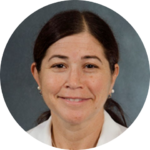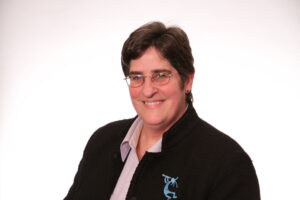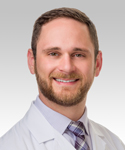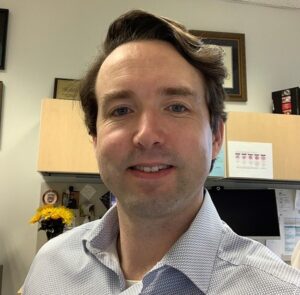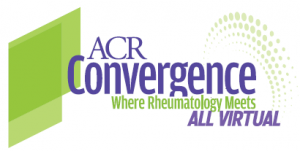 ACR Convergence 2021—With more than 600 speakers and science presentations and 13,500 participants from 110+ countries, ACR Convergence 2021 gave rheumatologists a global view of advances and challenges within the field of rheumatology. It also managed to connect new and old friends, albeit virtually.
ACR Convergence 2021—With more than 600 speakers and science presentations and 13,500 participants from 110+ countries, ACR Convergence 2021 gave rheumatologists a global view of advances and challenges within the field of rheumatology. It also managed to connect new and old friends, albeit virtually.
During the Closing Session: A Look Beyond: Open Reflection & Future Innovation, speakers shared their thoughts on some of the most illuminating sessions and challenges facing rheumatology.
Taken by Surprise
With the diversity of sessions involved in this year’s ACR Convergence, speakers remarked on sessions with findings that took them by surprise.
The role of the microbiome in rheumatoid arthritis (RA) pathogenesis was an interesting and surprising topic for Jennifer Anolik, MD, PhD, a rheumatologist with the University of Rochester Medical Center, New York. An abstract that examined RA patients and mouse models found that researchers could identify a commensal bacteria isolated from RA patients and that these same patients made RA antibodies that interacted with the bacteria. When the bacteria were given to mice, it induced RA.1
This type of research may lead toward future therapeutics that can target the microbiome for the emergence of disease and treatment, Dr. Anolik said.
Marian T. Hannan, DSc, MPH, professor of medicine at Harvard Medical School, Cambridge, Mass., and co-director of the Musculoskeletal Research Center and senior scientist, Hinda and Arthur Marcus Institute for Aging Research, Boston, was particularly interested in research related to environmental and social factors. For example, she highlighted sessions that discussed research on climate and pollution as they relate to autoimmunity.
Additionally, Dr. Hannan noted that the ARP Distinguished Lecture by Edward Yelin, PhD, University of California, San Francisco, raised the question of whether being poor makes you sicker or if being sick makes you poor. “Both are true,” Dr. Hannan said, adding that Dr. Yelin talked about outcomes related to lupus and RA as they tie into where patients live, their employment status and the labor market being as important as clinical interventions.
“We tend to focus on treatments and diagnosis, and the interplay that has on our environment and people’s personal circumstances are huge. It underscores how much I don’t think about that, but I should,” Dr. Hannan said.
Findings related to multisystem inflammatory syndrome in children (MIS-C) were of interest to Erica Lawson, MD, a pediatric rheumatologist at University of California, San Francisco, as children with MIS-C fill patient wards. One update supported the idea that glucocorticoids plus intravenous immunoglobulin (IVIG) is a better treatment option than IVIG alone to treat those with MIS-C, she said.
What Will Change Your Practice?
Session moderator Michael Putman, MD, MSc, assistant professor of medicine at Medical College of Wisconsin, Milwaukee, asked speakers which presentations will change their clinical practice.
A better focus in geriatrics and rheumatology is something that Dr. Hannan said she will pay more attention to going forward. Several sessions addressed “geri-rheum,” as she called it, and she believes rheumatologists have a lot to learn from geriatric-focused colleagues.
Adam Brown, MD, a rheumatologist with the Cleveland Clinic, found clinical pearls in The Great Debate, which focused on belimumab vs. voclosporin and other new treatments for lupus nephritis. The debate, along with other sessions, is pushing Dr. Brown to use mycophenolate mofetil and other such medications earlier in the treatment of patients with lupus and nephritis.
“Now the standard will be mycophenolate and something else, I think,” Dr. Brown said. He was encouraged by the emerging number of treatments for lupus nephritis.
Dr. Anolik was encouraged by research presented at the meeting that focused on RA disease prevention—although it’s not quite ready for clinical practice. “There were a number of interesting presentations on RA and a great session about preclinical RA,” she said.
This included a presentation from Kevin D. Deane, MD, PhD, an associate professor of medicine, in the Division of Rheumatology and holder of the William P. Arend Endowed Chair in Rheumatology Research at the University of Colorado Denver. Dr. Deane addressed a stairway of pathogenic steps that lead to RA and where rheumatologists can intervene. A plenary session also addressed subclinical arthritis and pre-RA, she said.
Biggest Challenges Ahead
Dr. Putman asked speakers what they anticipate the biggest challenges are for rheumatology beyond COVID-19.
Equity and inclusion should remain a major focus, Dr. Lawson said, pointing to an abstract from Joyce Chang, MD, MS, Boston Children’s Hospital, that studied claims data and found significant and persistent disparities among outcomes in children with lupus. There should be more data on social determinants of health and increasing research study enrollment to include patients who look like the patients rheumatologists care for, even if the latter is a challenge, Dr. Lawson said.
Precision medicine is a major opportunity and challenge for rheumatology, Dr. Brown noted. “We can say to patients, ‘I have many medications, but I don’t know what will work for you,’” he said. As precision medicine develops, physicians can further focus on individual patients’ disease and treatment needs.
Applying findings from big data into clinical practice is another challenge, Dr. Anolik stated. This will include learning from big data and drilling it down to make it easier to implement changes in clinical practice.
Finally, Dr. Hannan believes that communication is an evergreen challenge, as noted in the ACR Opening Session with Seema Yasmin, MD. “The number one medical procedure we do with all patients is communication,” she said, emphasizing the need to improve how rheumatologists educate and communicate with patients. A session called The Gift of Gab: Effective Communication for Clinicians, Investigators, and Educators offered pearls for this area, Dr. Hannan said.
Editor’s note: If you missed any of these sessions, you can still catch them in recordings on the ACR Convergence 2021 platform.
Vanessa Caceres is a medical writer in Bradenton, Fla.
Reference
- Chriswell M, Seifert J, Bloom M, et al. Plasmablast-derived autoantibodies from individuals at-risk for RA that target RA-relevant antigens are polyreactive with arthritogenic bacteria [abstract]. Arthritis Rheumatol. 2021;73(suppl 10).
